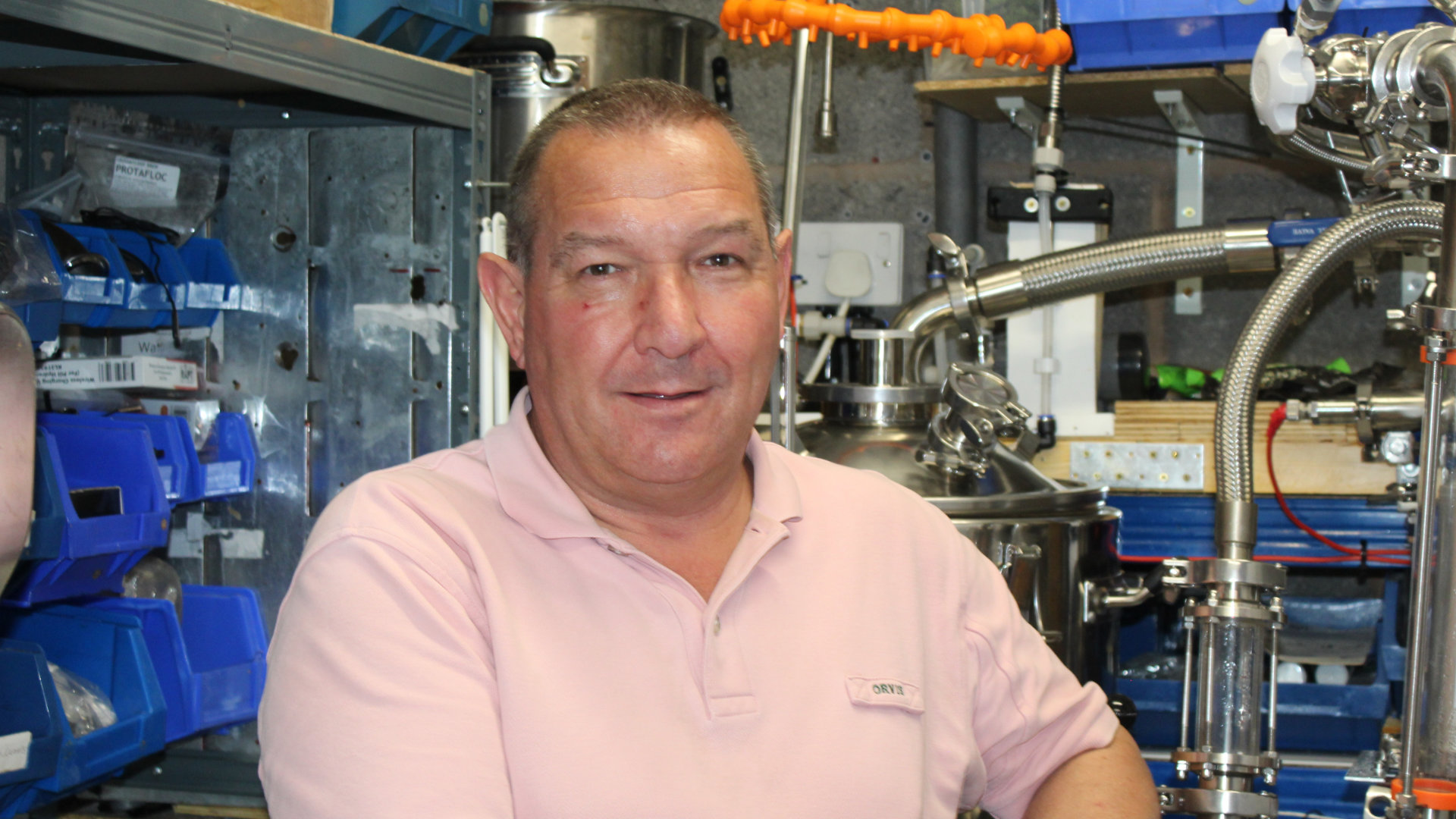I started homebrewing the way most people do—using kits. I bought a starter pack that included a two-tin kit, a fermenting bucket, and a plastic pressure barrel. Over a year or two, I brewed most of the available kits, which gave me a good introduction to the basics. Then I took a break while moving house.
 After settling in, I started looking into all-grain brewing and spent countless hours watching YouTube channels like The Apartment Brewer, Flora Brewing, and Dudes Brews. Seeing how accessible all-grain brewing could be gave me the confidence to take the plunge, and I haven’t looked back since.
 My brewspace is currently in the kitchen, as I don’t have a garage to convert. I make do with what I have, and it’s been working well so far.
 As a father of a seven-year-old, I tend to start brew days very early, usually around 4am. This early start helps me avoid having up to 30L of boiling wort around a child, which has become an important part of my routine. It’s definitely a bit of a juggle, but it helps ensure that I can brew without distractions and still have time for family.
 Currently, my Series X is set up in a summerhouse in the garden, but my next big goal is to enhance the space by adding a garden room. Ultimately, I’d love to create a micropub with a bar, TV, and a general mancave vibe. It’ll be the perfect setup for enjoying and sharing my beers in a more social and relaxed environment.
The BeersÂ
My personal favourite styles tend to be hop-forward, especially West Coast IPAs, but I brew a wide variety, including English ales and stouts, as I enjoy sharing my beers with friends and family.
 Lately, I’ve developed a real appreciation for lagers and the diversity within the style. Modern yeasts like Après Ski have made it much easier to brew lagers at home, and I’ve been experimenting more in that space. The most challenging aspect of brewing for me is recipe development. I’ve mainly focused on tweaking existing recipes from homebrew books or magazines, brewing them and then adjusting the second or third batch to better suit my palate.
 I realise that I need to invest more time in hop pairing and experimenting with ingredients to start developing full recipes from scratch. This is something I plan to work on in the future to further expand my brewing knowledge and skills.
 The most complex beer I’ve brewed was an imperial porter. It involved a lot of adjuncts like toasting cacao nibs, creating tinctures, and using oak staves. I did have an idea for a blood orange milkshake IPA, though. I was hoping the beer would have a red colour but with the orange flavour to create a fun, sensory confusion effect. I actually went ahead and brewed it, and while the beer turned out great, it didn’t quite turn red as I originally envisioned. The orange flavour came through nicely, though, and it was still a fun experiment.
 Beyond beer, I’ve brewed cider using both kits and store-bought apple juice with varying success. I also enjoy making flavoured spirits like limoncello and fruited gins. Additionally, I’ve dabbled in lacto-fermentation, which I’ve found works particularly well for making hot sauces. The only styles I really shy away from are sour beers.Â
The EquipmentÂ
My first all grain kettle was the Brewster Beacon by Brewolution, an all-in-one system in a similar vein to the Brewzilla. This lasted for five years before needing replacement. At this point being a MASHED Magazine subscriber, I decided to investigate and invest in the Dark Farm Brew Tank.
 Fermentation wise, I use the Fermzilla all rounder in a homebuilt chamber made from a rescued old fridge. I have found this gives me the perfect balance of cost to performance, being able to ferment under pressure where required.
 The majority of serving is done via the Kegland Series X 3 tap kegerator, I still have a few bottle conditioned beers per batch.
First Impressions Of The Brew TankÂ
As it’s a relatively new purchase, I’ve only had the chance to brew one batch on the Dark Farm Brew Tank so far, a porter. Fortunately, it turned out pretty well!
 First impressions are that it’s a very solid and robust piece of equipment. It’s definitely more manual in terms of effort compared to my old all-in-one system where everything was self-contained.
 From my first brew, I’d advise being careful when starting recirculation. It’s best to start slow to prevent the water level from falling too low, and make sure the water stays above the temperature probe to avoid issues. Other than that, it’s been a great experience so far, and I look forward to brewing more batches on it.
Best Homebrew Tip For Beginners
Start simple. Just because your favourite beer might be a Russian Imperial Stout or a complex, highly hopped IPA, doesn’t mean you should jump straight into brewing them. Making mistakes with these styles, especially with basic brewing techniques, can be both costly and disheartening.
 A good, simple pale ale can be far more enjoyable than a ruined, complex beer. Focus on mastering the basics first, and build from there.  â–











